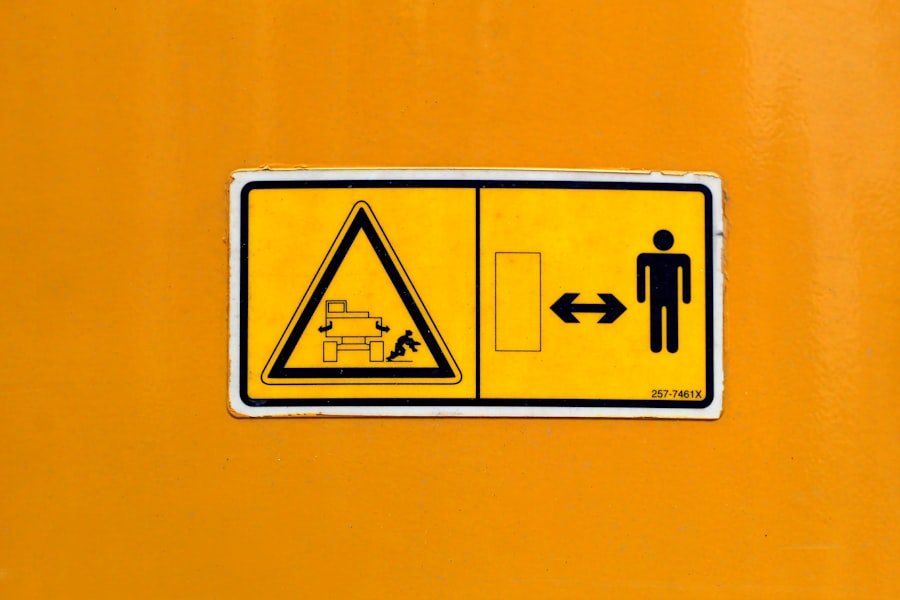Workplace safety regulations are a critical component of modern employment practices, designed to protect the health and well-being of employees across various industries. These regulations encompass a wide range of guidelines, standards, and laws that govern how work environments should be structured and maintained to minimise risks and hazards. The origins of workplace safety regulations can be traced back to the industrial revolution, a period marked by rapid industrialisation and often perilous working conditions.
As industries evolved, so too did the recognition of the need for formalised safety measures to safeguard workers from accidents and health issues. In the United Kingdom, the Health and Safety at Work Act 1974 serves as a cornerstone of workplace safety legislation. This act established the legal framework for ensuring that employers provide a safe working environment, free from health risks and hazards.
It mandates that employers assess risks, implement necessary safety measures, and provide adequate training to employees. The act also empowers employees to take an active role in their own safety by encouraging them to report unsafe conditions without fear of reprisal. This foundational legislation has paved the way for a comprehensive system of regulations that continues to evolve in response to changing workplace dynamics and emerging risks.
Summary
- Workplace safety regulations are put in place to protect the health and safety of employees in the workplace.
- It is important for employers to comply with workplace safety regulations to prevent accidents and injuries.
- Types of workplace safety regulations include those related to fire safety, hazardous substances, and personal protective equipment.
- The responsibility for enforcing workplace safety regulations often falls on government agencies such as the Health and Safety Executive (HSE) in the UK.
- Common workplace safety violations include failure to provide proper training, inadequate safety equipment, and lack of emergency preparedness.
The Importance of Workplace Safety Regulations
The significance of workplace safety regulations cannot be overstated, as they play a vital role in protecting employees from harm and fostering a culture of safety within organisations. By establishing clear guidelines for safe practices, these regulations help to reduce the incidence of workplace accidents, injuries, and illnesses. For instance, industries such as construction, manufacturing, and healthcare are inherently hazardous, making robust safety regulations essential for mitigating risks associated with heavy machinery, toxic substances, and other potential dangers.
Moreover, workplace safety regulations contribute to overall employee morale and productivity. When workers feel safe in their environment, they are more likely to be engaged and motivated in their tasks. A culture that prioritises safety not only enhances job satisfaction but also reduces absenteeism and turnover rates.
Companies that invest in safety measures often experience lower insurance premiums and reduced costs associated with workplace injuries. This creates a compelling business case for adhering to safety regulations, as the financial benefits can be substantial in addition to the ethical imperative of protecting employees.
Types of Workplace Safety Regulations

Workplace safety regulations can be categorised into several types, each addressing specific aspects of health and safety in the workplace. One prominent category is general health and safety regulations, which apply broadly across various industries. These regulations typically cover areas such as risk assessments, emergency procedures, and employee training requirements.
For example, the Management of Health and Safety at Work Regulations 1999 mandates that employers conduct risk assessments to identify potential hazards and implement appropriate control measures. Another important category is industry-specific regulations that address unique risks associated with particular sectors. For instance, the Control of Substances Hazardous to Health (COSHH) Regulations 2002 outlines requirements for managing hazardous substances in workplaces such as laboratories and manufacturing plants.
Similarly, the Construction (Design and Management) Regulations 2015 focus on ensuring safety throughout the lifecycle of construction projects, from planning to execution. These tailored regulations are crucial for addressing the specific challenges faced by different industries while ensuring compliance with overarching health and safety principles.
Who is Responsible for Enforcing Workplace Safety Regulations
The enforcement of workplace safety regulations is a shared responsibility involving multiple stakeholders, including government agencies, employers, and employees themselves. In the UK, the Health and Safety Executive (HSE) is the primary regulatory body responsible for enforcing health and safety laws. The HSE conducts inspections, investigates incidents, and provides guidance on compliance with safety regulations.
Their role is pivotal in ensuring that employers adhere to legal requirements and maintain safe working environments. Employers also bear significant responsibility for enforcing workplace safety regulations within their organisations. They are required to develop and implement safety policies, conduct regular training sessions, and foster a culture of safety among employees.
This includes encouraging workers to report unsafe conditions or practices without fear of retaliation. Employees themselves play a crucial role in this ecosystem by actively participating in safety initiatives, adhering to established protocols, and reporting any concerns they may have regarding workplace hazards. This collaborative approach ensures that safety is prioritised at all levels of an organisation.
Common Workplace Safety Violations
Despite the existence of comprehensive workplace safety regulations, violations still occur frequently across various industries. Some common violations include inadequate training for employees on safety procedures, failure to conduct regular risk assessments, and neglecting to provide appropriate personal protective equipment (PPE). For instance, in construction sites where workers are exposed to falling objects or hazardous materials, the absence of proper PPE can lead to severe injuries or even fatalities.
Another prevalent violation is the lack of proper maintenance for equipment and machinery. Employers are required to ensure that all tools and equipment are regularly inspected and maintained to prevent malfunctions that could pose risks to workers. Additionally, overcrowding or improper storage in workspaces can create hazards such as slips, trips, and falls.
These violations not only jeopardise employee safety but can also result in significant legal repercussions for employers who fail to comply with established regulations.
Consequences of Non-compliance with Workplace Safety Regulations

The consequences of non-compliance with workplace safety regulations can be severe for both employers and employees. For employers, failing to adhere to safety standards can result in hefty fines imposed by regulatory bodies such as the HSE. These fines can vary significantly depending on the severity of the violation and its impact on employee safety.
In some cases, non-compliance can lead to criminal charges if negligence is proven to have directly caused harm or injury. For employees, the repercussions of non-compliance can be life-altering. Workplace accidents resulting from inadequate safety measures can lead to serious injuries or long-term health issues.
In extreme cases, such violations can result in fatalities. Beyond physical harm, employees may also experience psychological effects stemming from unsafe working conditions or witnessing accidents. The emotional toll can contribute to decreased job satisfaction and increased stress levels among workers.
How to Ensure Compliance with Workplace Safety Regulations
Ensuring compliance with workplace safety regulations requires a proactive approach from employers and a commitment to fostering a culture of safety within organisations. One effective strategy is conducting regular training sessions for employees on health and safety practices. These sessions should cover topics such as hazard recognition, emergency response procedures, and proper use of PPE.
By equipping employees with knowledge and skills related to workplace safety, organisations can significantly reduce the likelihood of accidents. Additionally, implementing a robust system for reporting hazards is essential for maintaining compliance. Employers should encourage open communication regarding safety concerns and establish clear procedures for reporting incidents or unsafe conditions.
Regular audits and inspections can also help identify potential violations before they escalate into serious issues. By actively engaging employees in safety initiatives and demonstrating a commitment to compliance, organisations can create an environment where safety is prioritised at all levels.
The Future of Workplace Safety Regulations
As workplaces continue to evolve in response to technological advancements and changing societal norms, the future of workplace safety regulations will likely reflect these shifts. One emerging trend is the integration of technology into safety practices. For instance, wearable devices equipped with sensors can monitor workers’ exposure to hazardous conditions in real-time, providing valuable data that can inform risk assessments and enhance compliance efforts.
Moreover, as remote work becomes increasingly prevalent, new challenges will arise regarding employee health and safety outside traditional office environments. Regulations may need to adapt to address issues such as ergonomic considerations for home offices or mental health support for remote workers facing isolation or stress. The ongoing dialogue surrounding workplace safety will necessitate collaboration between regulatory bodies, employers, and employees to ensure that evolving practices align with established safety standards while effectively addressing emerging risks.
In conclusion, workplace safety regulations are an essential aspect of modern employment practices that protect employees from harm while fostering a culture of safety within organisations. As industries continue to evolve, so too must the regulations that govern them, ensuring that they remain relevant and effective in safeguarding worker health and well-being.
Workplace safety regulations are crucial for ensuring the well-being of employees and preventing accidents in the workplace. Employers must adhere to these regulations to create a safe working environment for their staff. For more information on how to keep your business secure during lockdown, check out this insightful article on 8 tips to keep your business secure during lockdown. It provides valuable advice on how to protect your business and employees during these challenging times.
FAQs
What are workplace safety regulations?
Workplace safety regulations are a set of rules and standards established by government agencies to ensure the safety and health of employees in the workplace. These regulations are designed to prevent accidents, injuries, and illnesses that may occur as a result of work-related activities.
Why are workplace safety regulations important?
Workplace safety regulations are important because they help to protect the health and well-being of employees. They also help to create a safe and productive work environment, reduce the risk of accidents and injuries, and ensure that employers comply with legal requirements.
What are some common workplace safety regulations?
Common workplace safety regulations include requirements for safe working conditions, proper use of personal protective equipment, training on hazardous materials, emergency preparedness, and compliance with specific industry standards. These regulations may vary depending on the type of work and industry.
Who is responsible for enforcing workplace safety regulations?
In the UK, the Health and Safety Executive (HSE) is responsible for enforcing workplace safety regulations. The HSE is a government agency that works to prevent work-related injuries, illnesses, and fatalities by enforcing health and safety laws and providing guidance and support to employers.
What are the consequences of not complying with workplace safety regulations?
Failure to comply with workplace safety regulations can result in fines, legal action, and even closure of the business. Non-compliance can also lead to accidents, injuries, and illnesses, which can have a negative impact on the well-being of employees and the reputation of the company.
